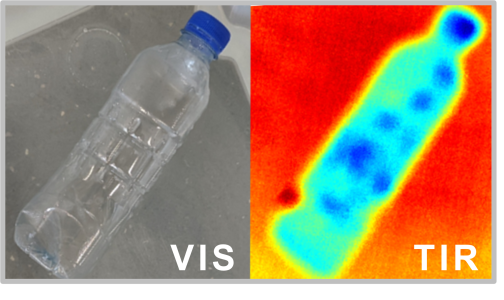TISPLALI

There is growing global concern over the chemical, biological and ecological impact of marine plastic pollution. Every year many millions of tons of plastic enter the global oceans but where it goes remains largely unknown. Remote sensing has the potential to provide long-term, global monitoring but for plastics in the ocean it is still in early stages. To date, most progress has been made in the field of remote sensing using visible (VIS), near infrared (NIR) and short-wave infrared (SWIR) wavelengths, and it has become clear that remote sensing in VIS-SWIR would improve by using complementary measurements. Project TISPLALI (thermal infrared sensing of marine plastic litter) was proposed for ESA’s ‘Discovery and Preparation Campaign’ on ‘Remote Sensing of Plastic Marine Litter’ to explore a novel sensing technology.
The physics explaining thermal infrared (TIR) reflectance is different from reflectance in the VIS- SWIR because TIR radiance leaving a surface is composed of reflected and emitted energy, while VIS-SWIR surface leaving radiance is just reflected light. This implies that not only does thermal emissivity affect surface leaving TIR but also temperature. TIR sensing requires no external light source like the sun and can therefore perform during both day and night. TIR sensing could detect plastic surfaces that are a challenge in optical sensing, such as clear and dark coloured plastics. Using TIR, we can detect plastic floating on the ocean surface, but it is not possible to sense plastic below the water surface as water absorbs TIR radiance within the top mm. We used common plastic litter items to evaluate the performance of TIR sensing under a range of different conditions, i.e., different water and air temperatures, light intensity, and cloudiness of the sky. There are two atmospheric windows in TIR, mid-wave infrared (MWIR, 3–5 μm) and long-wave infrared (LWIR, 8–14 μm). We used an UAV (unmanned aerial vehicle) and a TIR camera imaging in a single broadband in LWIR to assess the following questions:
- How can TIR sensing complement optical remote sensing?
- Can an UAV TIR camera operate as a TIR sensor?
- How does the TIR radiance transfer model perform? When and where can we expect the best results? Which plastic litter items give the best results?
- Can we separate plastic litter from other surface features on the water surface?
- Can we see plastic litter on different surfaces than water?
